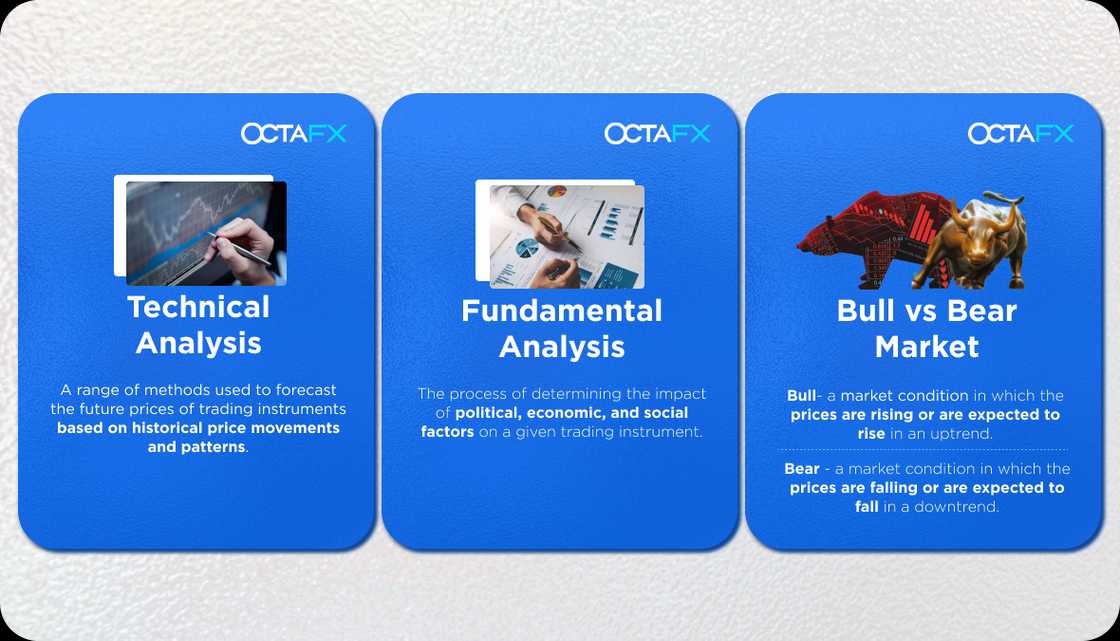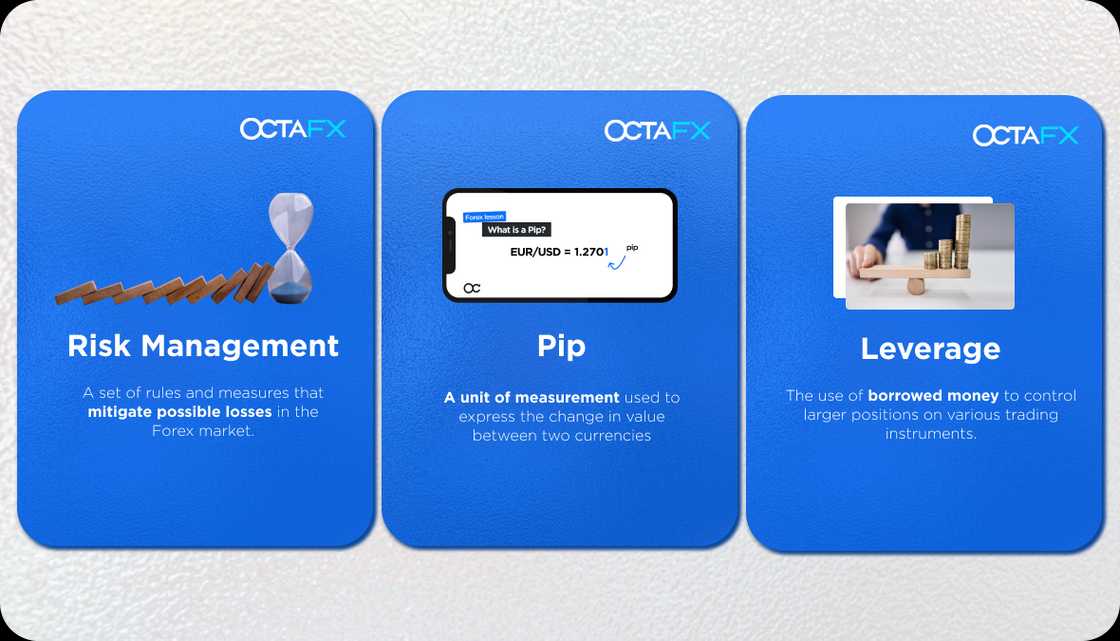Trading Forex as a Beginner: 5 Tips and 10 Terms You Need to Know
OctaFX presents the ultimate guide to Forex, complete with tips and cards with all the necessary terms to understand how trading works.
Entering the Forex market for the first time is challenging. There are dozens of confusing terms, from pips and spreads to bulls and bears, and no easy tips as to how to open and when to close your first orders. Below, you will find all you need to know as a beginner in the Forex market. You can print out the cards with trading terms and make an easy-to-remember glossary.
● Learn the fundamentals
First things first, learn how the Forex market works, who participates in it, and how you can make money from trading in it. In short, the Forex market is where everyone, from individuals to major banks and even countries, buys and sells currencies. You can buy and sell currencies at an exchange office, but to profit from currency pair trading in the global market, you need a broker. Simply put, a broker is an intermediary who sends your trades to the wider international market where prices change every second, instead of once a day, as at a currency exchange office. This allows you to profit in minutes. The broker, in turn, profits from markup — a small share in the difference between the price at which you buy and sell a currency.

Source: UGC
● Create a strategy
To trade successfully and not just waste your money, you need a strategy. A trading strategy requires a systematic approach including when and how to open a trade. First, decide on when you enter the market. This could be done using technical analysis, fundamental analysis, or a combination of both. Second, determine the number of funds you can put in one trade. Third, set up strict rules for exiting the trade, whether with or without profit, so as not to keep it open for too long and potentially result in a loss.
● Control emotions
Emotions, such as greed, fear, and hope, often make you open unprofitable trades or keep some trades open until they start bringing losses. Whether it’s a bull market or a bear market, you always have to keep your emotions in check by implementing strict risk management techniques. For instance, even if you think that the price will go higher than the level at which you set Take Profit, don’t remove it. With Forex, less is more. Consistent strategy-based profits eventually bring in more than occasional big wins based on luck. Alternatively, you can set a trailing stop order to move higher together with the price.

Source: UGC
● Master risk management
Risk management keeps you from ending up with an empty account and incurring preventable losses. There are two main rules that you have to follow to effectively reduce the risks during trading. One requires you not to spend more than 4% of your capital on a single trade. Another rule is about keeping your loss-per-trade at a maximum of 25% and quit it once it gets there. You can calculate these percentages in pips and then set a Stop Loss order to exit the trade for you at a certain level.
● Remember that leverage is a double-edged sword
The leverage provided by Forex brokers not only increases your profit potential but also risks. Should the price go in an undesired direction for a long time, you could lose all your capital. Watch your margin level closely and set up Stop Loss to prevent the trade from going down too far.
There’s also another tip we’ve saved up. To become a successful trader, you need to practice a lot. Try opening a demo account with OctaFX to get an understanding of what trading is, or test your skills in a real account.

Source: UGC
[Sponsored]
Source: Legit.ng


